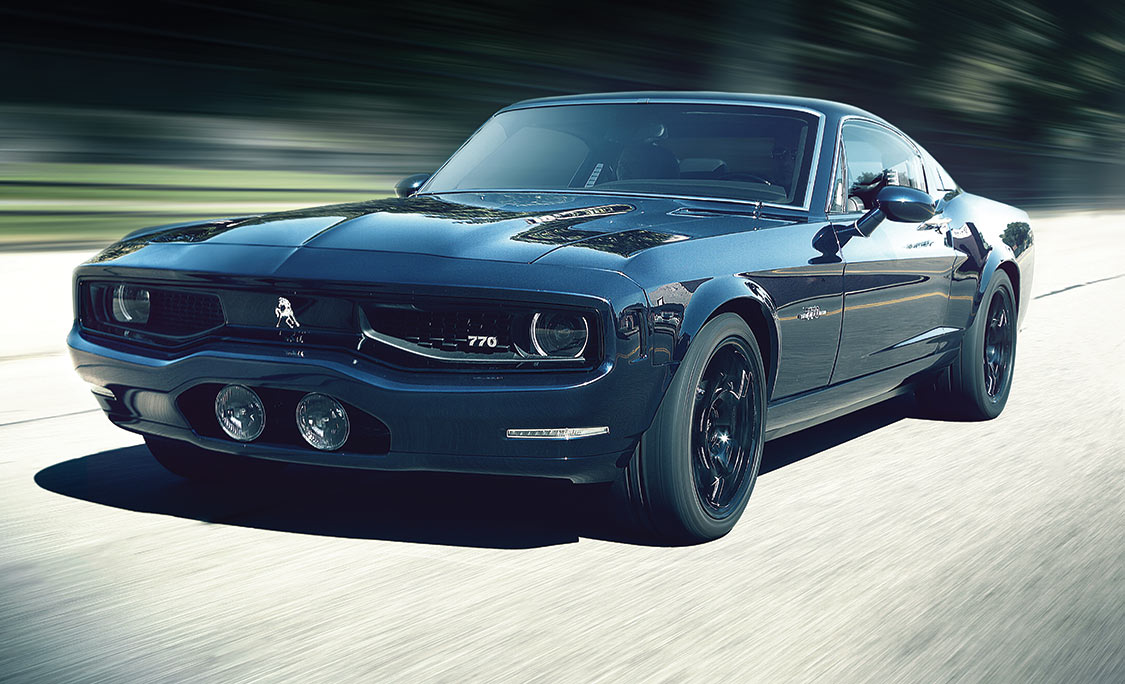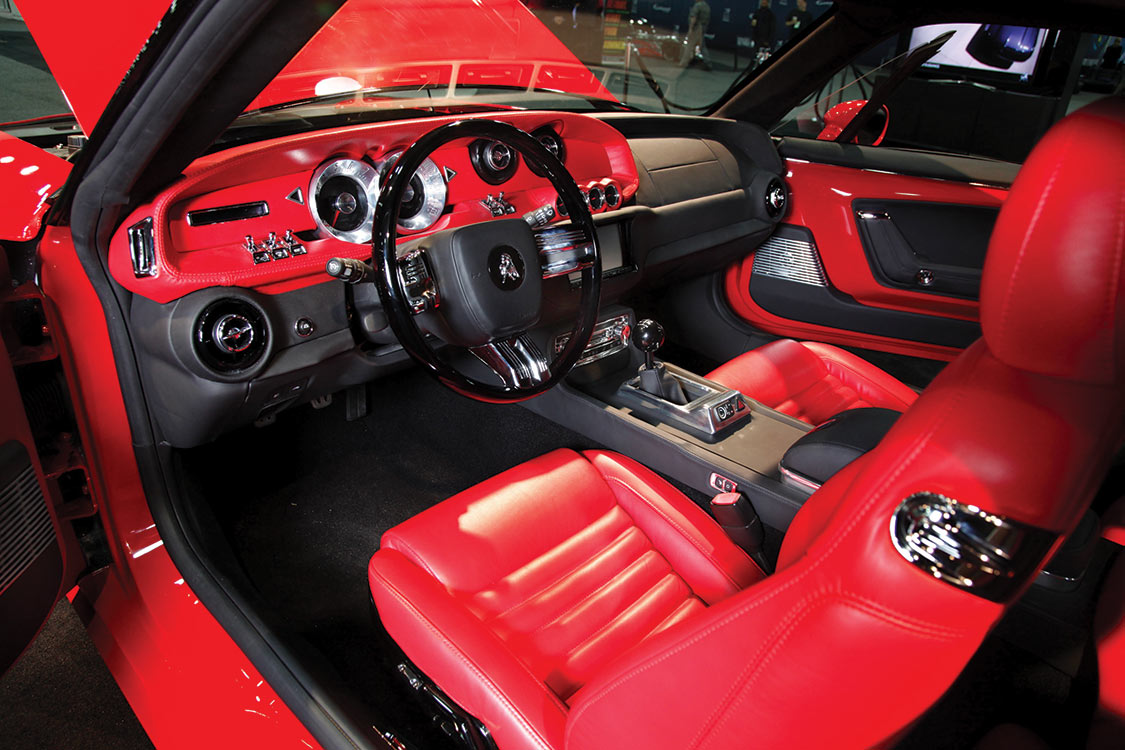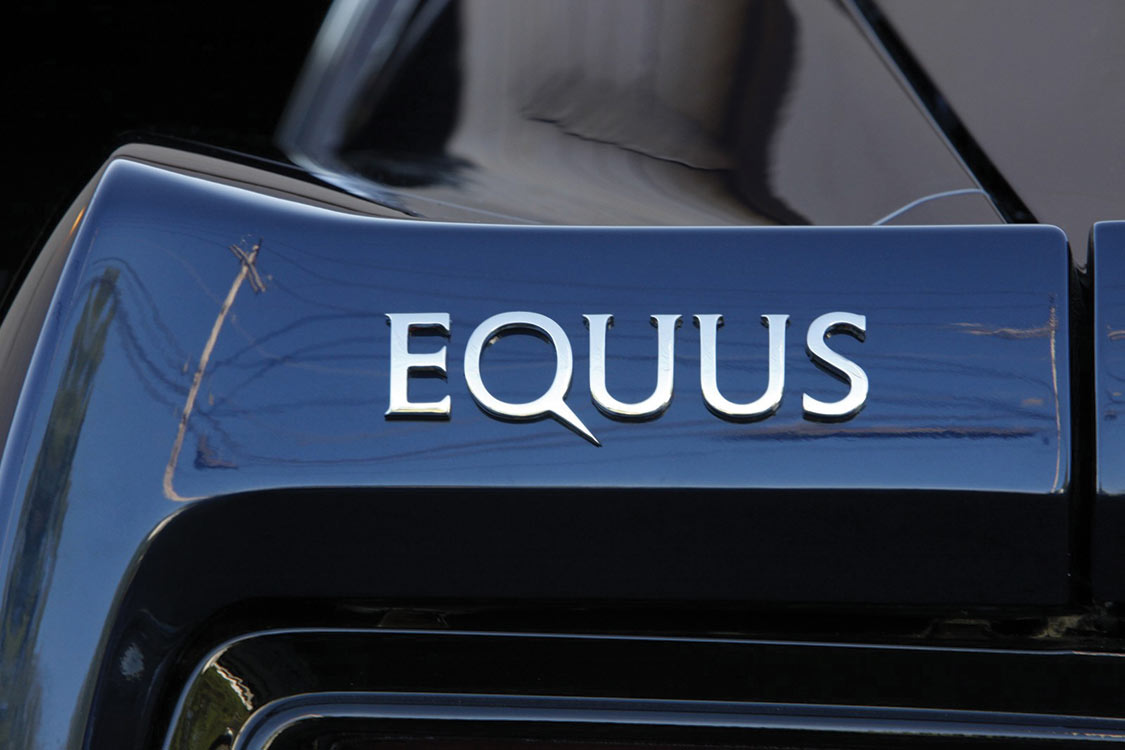 PHIL BERG
.
June 06, 2022
.
All Feature Vehicles
PHIL BERG
.
June 06, 2022
.
All Feature Vehicles

Every American car nut, we all know, dreams of Mustang-like shapes—an archetypal vision of freedom and performance. But the impact of this symbol is actually worldwide: Growing up in central Africa, the first American movie that Bassam Abdallah ever saw was 1968’s “Bullitt,” but his viewing was in the 1980s, when he was a teen. After seeing “Bullitt,” Lebanese-born Abdallah’s heart was imprinted with passion for the film’s cars, notably the Mustang fastback driven by Steve McQueen.

Later movies and television shows featuring classic U.S. muscle cars—“Starsky & Hutch,” “The Dukes of Hazzard”—aroused yet deeper feelings of freedom and passion, which Abdallah felt compelled to express in 2009 when he took 10 of his prized personal Mustangs on a two-week tour of India: “This adventure takes place on 1000-year-old paths traveled throughout history by millions of human beings, powerful monarchs and conquerors. Many believe these paths are still inhabited by divinities. We as modern day, ordinary adventurers have become, for a short moment in time, lords of these paths now turned to roads, and we rightfully quiver at the thought of driving where the footsteps of the Mahatma walked over his great land.”
Our overall impression is the Bass770 is luxurious but has exotic performance such as a Ford GT that’s easier to get into.
Prepping for the trip led Abdallah—who runs a giant housewares company in Africa—to create two dream cars to drive, modern visions of the American muscle car, which to him were conglomerations of the 1963 Barracuda, late 1960’s Camaro, Mustang, Challenger and Charger. He tapped famed Pantera designer Tom Tjaarda to design the two cars, with an eye on eventually building production versions. The designs are not Mustangs, other than the general proportions. Following the Indian road trip, one design has evolved into the Bass (pronounced like bass guitar, a contraction of Bassam) 770, a small series of which are being handmade in Michigan using unmodified C6 Corvette ZR1 LS9 640-hp powertrains purchased complete from GM.
The suspension is also taken from the modern Corvette, although the Bass770 is 6 in. longer and 2 in. wider. This is significant since Abdallah wants the production cars to be turnkey, not kits where an owner must have some pieces assembled later. To do that the cars must pass all emissions and safety rules, even where kit cars are allowed some exceptions. He also wants the Bass770 to be a luxury cruiser, not a sports racer, so the added size creates necessary roominess over the stock Corvette.
Performance of the final EPA and DOT-certified Bass770 is expected to be better than the C6 ZR1, which is 0–60 in 3.4 seconds and the quarter mile in 11.6 sec. at 128 mph, with a top speed of 205 mph (Car and Driver test figures). It has to be better because to pass emissions testing to make the car a turnkey complete car, the Bass770 needs to weigh no more than the 3353-lb. Corvette. This blue preproduction car is 3620 lb., so the body is on its way from 70-percent carbon fiber to 100 percent—the first three early models have aluminum hoods and side panels.

The chassis is unique, with two large aluminum cradles to hold the stock Corvette’s A-arm and multilink suspension—with coilover shocks replacing the transverse leaf setup—and driveline, as well as a full roll cage. This chassis was designed with top racer and sports-car maker Don Panoz concurrently with a race-car chassis project. The car has evolved with styling and chassis modifications made by Abdallah and the designers and fabricators he coaxed from Panoz headquarters in Hoschton, Georgia, to “Rochester Hills, Michigan, where Abdallah’s Equus Automotive company makes its own carbon-fiber inner and outer panels.
Inside, the dash is filled with chrome toggle switches, a welcome throwback to the 1970s compared to the smartphone-inspired touchscreens that fill today’s cost-saving car designs. Our overall impression is the Bass770 is luxurious but has exotic performance such as a Ford GT that’s easier to get into. Abdallah owns four Shelby Mustangs, and the Bass770 is both quicker and feels much larger.
Performance of the blue car is ZR1-like, with very little intrusion of engine vibrations, but lots of low-frequency exhaust burbles, rumbles and roars. Ride is firm, and each tar strip on the road makes a memorable impact, although it doesn’t upset the car’s balance or the occupants. Despite the Bass770’s race-car structure and promise of top performance, it’s a comfy place to ride. The structure of the seats is Corvette, but they’re covered by uniquely designed thick foam that feels soft. The steering wheel is also a re-covered Corvette piece.
The Bass770 is built in the Detroit suburb of Rochester Hills by a couple dozen folks who have worked for all the original suppliers of the Corvette, low-volume concept cars and original equipment manufacturers. After the initial prototypes created for the 2009 cross-India tour—developed by Panoz—the company moved to Michigan to complete the EPA and DOT certifications and testing on GM and Delphi proving grounds. The goal is to be the only luxury handbuilt certified car in the U.S.
The front grille is a carbon-fiber insert that can be swapped out easily with different headlight configurations for different countries.

“There are a lot of hurdles for that,” explains Equus purchasing honcho Caryn Gawel, whose grandfather started his automotive career working for Packard and then spent 42 years at Chrysler. “We were originally going to sell only in the European Union, and we passed a lot of the EU standards. Some are tougher than the U.S. The emissions are on par. Lighting and safety are different.”
The global directive required some clever designs: The front grille is a carbon-fiber insert that can be swapped out easily with different headlight configurations for different countries. “Basically the whole chassis comes in parts, all the aluminum extrusions arrive and we assemble it here,” says Gawel. “The floor pan is super-formed aluminum that comes in as a piece. It’s all compartmentalized. Basically, in theory, you could change the exterior of the car and keep the chassis as it is. The firewall is designed and developed so it can easily be switched from a left-hand drive to a right-hand drive.” The glass is all unique, including the front vent windows, a design Abdallah insisted on to keep the nostalgic feel of the car.

Buyers place a 35-percent deposit of about $90,000 before construction begins—the process takes about six to eight months. Prices start at about $250,000, but each car is customized for the buyer. A total of three cars have been built in the current configuration—two more are being completed for non-North American demonstrations and three more production cars have been started for customers. Gawel explains that service and warranty work will be handled by selected GM dealers worldwide.
“We’ve had a lot of interest in Asia,” says Gawel. “There are certain exotic dealerships in Asia that can do the certification work once the cars get there. In the Middle East, Turkey has given us the most interest, surprisingly.” A Facebook page launched in 2013 has 645,000 “likes,” and a video of the blue Bass770 driven Steve McQueen-style around the ruins of Detroit has ticked over 2.5 million views. “Kids who are 9 years old know what the cars from the 1960s and 1970s look like because they’re in their video games. My nephews knew what this car was the moment they saw it and they are 9, 7 and 5,” says Gawel.
But young American kids aren’t the only fans of the car. Abdallah originally intended to create a song to accompany the video for the Bass770, stating that the two American exports of pop music and classic cars appeal to all cultures. To create the song in 2010, called “Citizens of the World,” he assembled a band from New York and well-known pop artists from Algeria, China, India and Nigeria, calling the group Pangea, which created its own recordings and developed a small cult following.
It was through racer Panoz that Abdallah met the film producer for the “Citizens of the World” video, Harry Winer, who said after the muscle-car tours in 2010: “Bassam is trying to find the commonalities in people so that he can build bridges between divergent cultures. If we can find things that remind us of the interests that we share and the beauty that we all appreciate, then instead of being pulled apart by our differences we will be united. So while America is being demonized in many parts of the world, Bassam decides to take his fleet of muscle cars—these vintage Mustangs that are worth a fortune—on a trip through India, on these awful roads. Thousands of people flocked to see Bassam’s automobiles, and that’s what got this notion going in his head.”
We use cookies to enhance your browsing experience, serve personalized ads or content, and analyze our traffic. By clicking "Accept All", you consent to our use of cookies. Visit our Cookie Policy for more info.
Notifications
Share Link